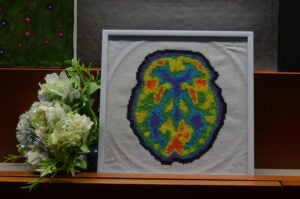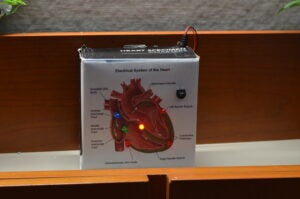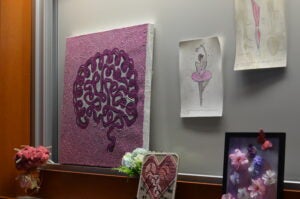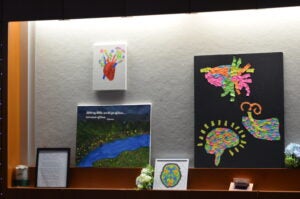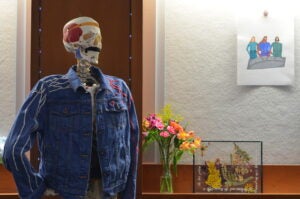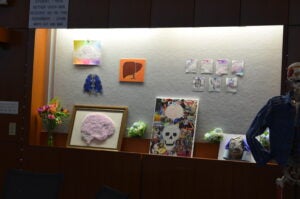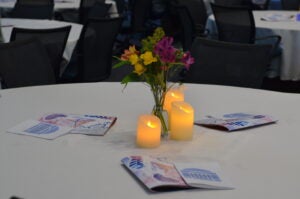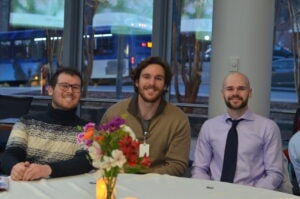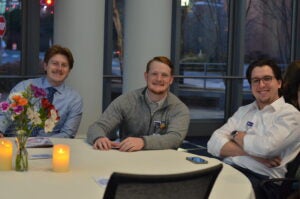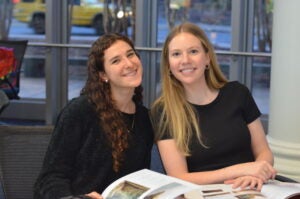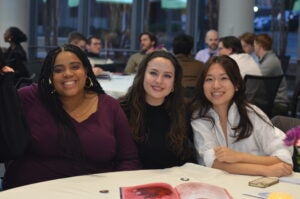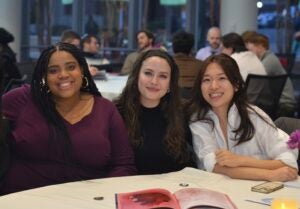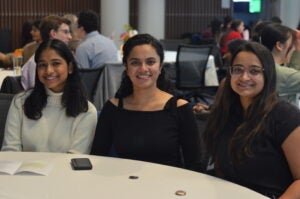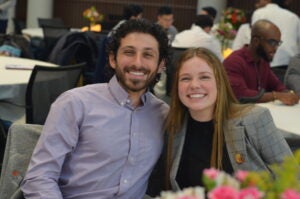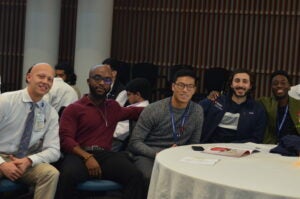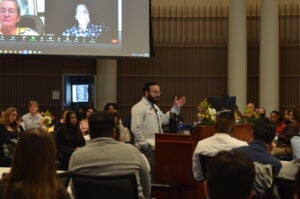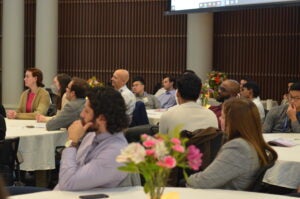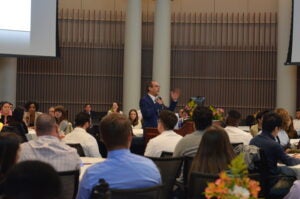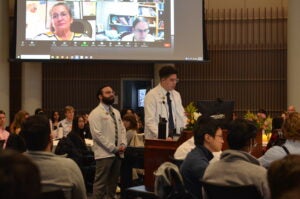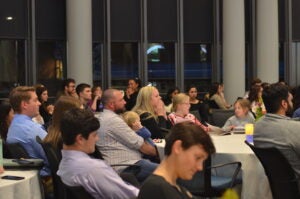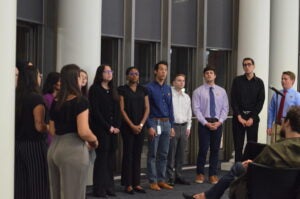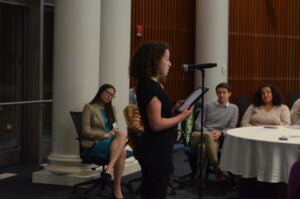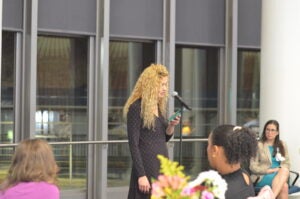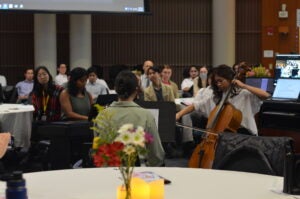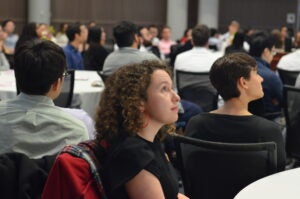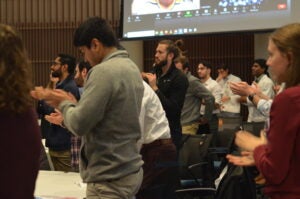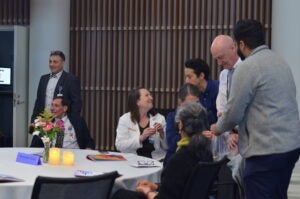 For second-year medical students, anatomy lab is a turning point in their training. It’s an opportunity to explore the unique and complex structures of a real human body in depth for the first time. But for many students, this course is about more than dissecting the web of vessels and tissues and organs that keep us alive. It’s also about gaining an appreciation for the robust lives those bodies have lived — and the sacrifice made to make them better physicians.
For second-year medical students, anatomy lab is a turning point in their training. It’s an opportunity to explore the unique and complex structures of a real human body in depth for the first time. But for many students, this course is about more than dissecting the web of vessels and tissues and organs that keep us alive. It’s also about gaining an appreciation for the robust lives those bodies have lived — and the sacrifice made to make them better physicians.
On December 8, UVA medical students and faculty paid tribute to those who made a choice to donate their bodies to further medical education at a Convocation of Gratitude ceremony. It is an event that Co-Chairs Gabe Ramos and Timour Abduhalikov, and PR Chair Bobby Pazhwak, say left a lasting impression on them and their fellow classmates. They share more about the event in the Q&A below.
Why did you volunteer to take part in planning the gratitude ceremony?
Gabe: Anatomy ended up being a very impactful experience for me. I was very scared going in. But I also knew that it was something that I was immensely grateful for. I was just in awe of the fact that I was allowed this privilege. It was very important to me that I was involved and could give back and give thanks to the to the donors themselves and the families of those donors.
Bobby: Knowing that someone chose to do this. That this was one of their final wishes before they passed — for us to learn from their body. The anatomical donor convocation is the one big event of the year where we recognize that gift and we pay homage to that person. I felt like it was important to be a part of that.
What did you do to prepare for the event?
Bobby: We use the Learning Studio in the Claude Moore Medical Education Building as the venue for this, so the whole day before we spent trying to transform our everyday classroom by putting up projects, putting out flowers and candles, and ironing lots of tablecloths. Thanks to the help of many of our classmates, I think we were very successful in making that space solemn and very beautiful. We had around 20 med students out of our 150-person class volunteer to help set up, so I think that demonstrates how serious a lot of our classmates are about this event, and how much they wanted to contribute to it.
Tell us about the event.
Gabe: It was a 2-hour convocation that involved several musical performances, poetry readings, and reflections by our peers and classmates. There was a meal afterwards, where people were able to discuss the happenings of the of the night and look at our anatomy convocation projects, which is a very large part of this. It’s an assignment that’s part of the curriculum, and each student is asked to reflect on their experience in anatomy lab. Some people choose to write poetry, some people create musical representations or visual art. It’s a really wonderful way for each and every student to get to reflect on their personal experience, and the families got to enjoy walking around and seeing those reflections.
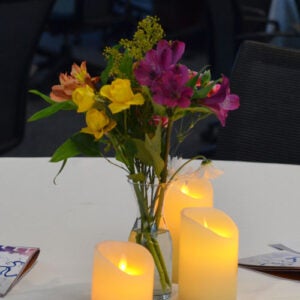 What made the event memorable?
What made the event memorable?
Gabe: The most poignant part of the event, I think, was that each of the three families was able to spend some time reflecting on the life of their loved one. It was those small tender moments that they that they shared with us about who they really were in their day-to-day. Because these people loved that person so vividly and so deeply and continue to love them, that feeling permeated the room. It was a very wonderful moment of communal empathy. To see the joy that these people have brought, and the deep ways that they have impacted their families, and the ways that they continue to impact us, was moving in a way that I can’t describe.
Timour: We don’t know anything about our donors during lab. We don’t know their names or how they passed. When you’re doing a dissection with a donor, you can sort of see different aspects of their body that may give you a clue, and I think one of our student presenters reflected on this. But all three of the families did a really good job of giving us the story of their loved one and the journey of their life. Like Gabe said, it was just little things about the donors in their journey from birth to death that was particularly moving, I felt.
Bobby: One moment that really stood out to me was an opportunity I had to talk to one of the families afterward, and they were telling me how, even though their loved one decided to donate their body to medicine, they didn’t really know what that meant or what that involved. So as much as this process was a big unknown for us as students, it was also a big unknown for the families. I thought that symmetry was kind of interesting. It brought the two of us together and answered some of our questions. ‘Who was this person we were working with over the past year?’ And for the families, ‘Who are these people who were taking care of my loved one after their death?’ That bridging of these two unknowns, I thought, was a really powerful moment that I took away from the event.
What did you learn about the faculty and your fellow classmates through this experience?
Timour: This year, we weren’t able to receive many donors from the state due to COVID, so we had to look elsewhere throughout the country. Our professor mentioned that he had an opportunity to receive donors from Maryland, but was very hesitant and rejected their offer because Maryland’s policy is that they will accept bodies of unclaimed persons, and he was very against that. It made me realize the weight that the word ‘donor’ has for faculty. He would reject an offer that would make things easier for himself and go find actual donors and not people who didn’t express their wish to become donors.
Bobby: I think it’s a really difficult task for people to learn anatomy because people are at different levels. There are some people who have done anatomy coursework before as an undergraduate and are ready to just dive right in and do whatever they need to do to learn. And then there are people like me who are really squeamish and need time to process everything that’s happening around them. I think our faculty did a really good job beforehand emphasizing the humanity of our donors and the fact that people will be on different levels to start. It’s definitely encouraged to take things at your own pace, and do what’s comfortable for you in that moment. That was something I really appreciated, and I think made the whole process a lot easier.
Gabe: I want to stress how amazing our anatomy teacher, [David Moyer, DC], is. He’s one of the most hardworking teachers, and I cannot tell you how grateful I am to have him in my life. Outside of his teaching obligations, he gives of his time to help us put on an event that’s so meaningful and special to so many of our classmates and the families of our donors. I think that alone is a very stunning act and speaks volumes about his character. We want to thank him for being so amenable to putting on something like this and continuing to do it year after year.
Filed Under: Education

